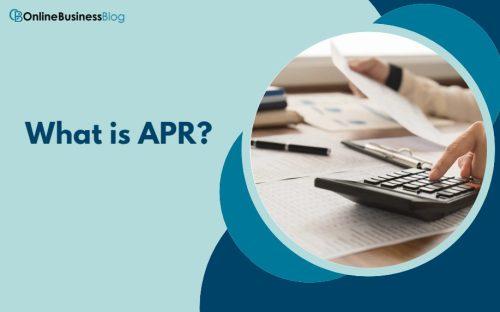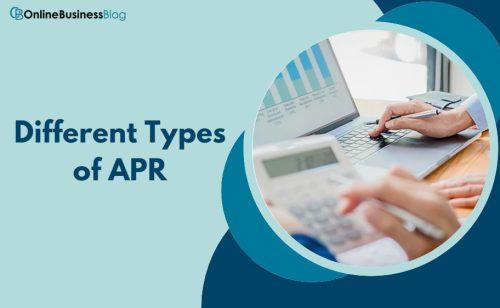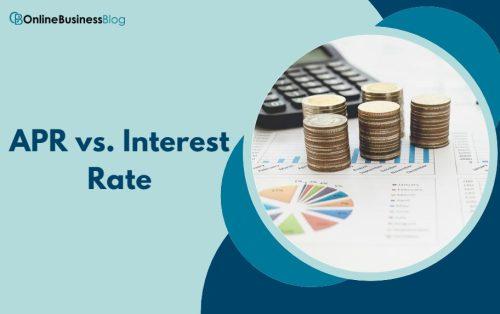Post Contents
What is APR?

The Annual Percentage Rate (APR) is a crucial financial term that represents the yearly cost of borrowing money or the yearly interest earned on an investment. It is expressed as a percentage and encompasses all fees and charges associated with the transaction. APR provides a standardized basis for comparing the true cost of borrowing or investing across different options.
Key Features of APR
- Universal Applicability: APR is widely applicable to various financial products, including mortgages, car loans, student loans, credit cards, and investment accounts.
- Comprehensive Cost Representation: APR encompasses not only the nominal interest rate but also all additional fees, such as origination fees, points, and processing fees.
- Comparative Tool: APR allows consumers to compare the true cost of borrowing or investing across different lenders or investment options.
- Regulatory Disclosure Requirement: Lenders are legally obligated to disclose APR to borrowers before any agreement is signed.
APR vs. APY
APR is often confused with Annual Percentage Yield (APY), which also represents a yearly interest rate. However, there’s a subtle difference. APY takes into account the compounding effect of interest, whereas APR does not. Compounding means interest is earned on previously earned interest, leading to higher overall returns over time.
Importance of APR
APR plays a critical role in financial decision-making. By understanding APR, individuals can:
- Compare loan offers: APR allows borrowers to compare the true cost of different loan options, enabling them to choose the most cost-effective one.
- Assess credit card interest rates: APR helps consumers compare credit card interest rates and make informed choices about credit card usage.
Evaluate investment returns: APR provides a basis for comparing the potential returns of different investment options.
How APR is Calculated?

The calculation of APR involves considering various factors, including the principal amount, interest rate, fees, and loan term. The process involves the following steps:
- Determine the Interest Rate and Fees:
- Interest Rate: The interest rate is the base cost of borrowing money, expressed as a percentage of the principal amount. This is typically stated as an annual rate.
- Fees: Fees are additional charges associated with the loan, such as origination fees, points, and processing fees. These fees vary depending on the lender and loan type.
- Calculate the Total Finance Charge:
The total finance charge represents the sum of interest and fees over the loan term. This is calculated using the following formula:
Total Finance Charge = Principal Amount × Interest Rate × Loan Term + Fees
- Calculate the Periodic Payment:
The periodic payment is the amount paid towards the loan each period, typically monthly. This is calculated using the following formula:
Periodic Payment = Principal Amount × (Interest Rate × (1 + Interest Rate)^Loan Term) / ((1 + Interest Rate)^Loan Term – 1)
- Calculate the Annualized Finance Charge:
The annualized finance charge is the total finance charge expressed as an annual percentage. It is calculated by multiplying the total finance charge by the number of periods in a year and dividing it by the principal amount.
Annualized Finance Charge = Total Finance Charge × Number of Periods in a Year / Principal Amount
- Calculate the APR:
The APR is the annualized finance charge expressed as a percentage. It is calculated by multiplying the annualized finance charge by 100.
APR = Annualized Finance Charge × 100%
Different Types of APR

Purchase APR
The purchase APR is the interest rate applied to new purchases made with a credit card. This is the most common type of APR associated with credit cards. If you don’t pay off your balance in full each month, you will be charged interest on your purchases at the purchase APR.
Balance Transfer APR
The balance transfer APR is a temporary introductory rate that is applied to balances transferred from another credit card. This type of APR is often used to entice new customers to sign up for a credit card. Balance transfer APRs are typically lower than purchase APRs, and they may have a 0% introductory period during which no interest is charged on transferred balances.
Cash Advance APR
The cash advance APR is the interest rate applied to cash advances taken out on a credit card. Cash advances are when you borrow money directly from your credit card account, typically by withdrawing cash from an ATM. Cash advance APRs are typically higher than purchase APRs, and they may not have a grace period.
Penalty APR
The penalty APR is a high interest rate that is applied to your account if you make a late payment, exceed your credit limit, or violate other terms of your credit card agreement. Penalty APRs are typically much higher than purchase, balance transfer, or cash advance APRs.
APR vs. Interest Rate

While the terms “APR” and “interest rate” are often used interchangeably, there’s a crucial distinction between the two.
Interest rate refers to the basic cost of borrowing money, expressed as a percentage of the principal amount. It’s the annual charge for the use of borrowed funds.
Annual Percentage Rate (APR), on the other hand, is a more comprehensive measure of the cost of borrowing money. It encompasses not only the interest rate but also all additional fees and charges associated with the loan, such as origination fees, points, and processing fees.
In essence, APR provides a more accurate representation of the true cost of borrowing, as it takes into account all the expenses incurred throughout the loan term.
Here’s a table summarizing the key differences between APR and interest rate:
| Feature | APR | Interest Rate | |
| Definition | Includes interest rate and additional fees | Solely the cost of borrowing money | |
| Purpose | Provides a comprehensive measure of borrowing costs | Represents the basic cost of borrowing | |
| Calculation | Considers interest rate and all associated fees | Refers to the percentage charged on the principal amount | |
| Application | Used for various loans, investments, and credit cards | Primarily associated with loans | |
| Disclosure Requirement | Lenders must disclose APR to borrowers | Interest rate is typically disclosed |
When comparing loan offers or evaluating credit card options, it’s crucial to consider APR rather than just the interest rate. APR provides a clearer picture of the true cost of borrowing and allows for more informed financial decisions.
Tips for Managing APR Effectively
Managing Annual Percentage Rate (APR) effectively involves understanding the concept, making informed choices, and adopting responsible financial practices. Here are some tips for effective APR management:
- Understand APR Calculations: Familiarize yourself with the formula used to calculate APR. This will help you interpret APR disclosures accurately and assess the true cost of borrowing or investing.
- Compare APRs: When comparing loan offers, credit cards, or investment options, pay close attention to their APRs. Choose the option with the lowest APR to minimize your overall borrowing or investment costs.
- Consider Fees: Don’t just focus on the stated APR; consider any additional fees associated with the transaction. These fees can significantly impact the true cost of borrowing or investing.
- Negotiate for Lower APRs: Don’t hesitate to negotiate for a lower APR with lenders or credit card companies. Your creditworthiness and bargaining skills can influence the APR you receive.
- Pay Off Balances Quickly: The longer you carry a balance on a credit card, the more interest you accrue. Aim to pay off your balance in full each month to avoid accumulating high-interest charges.
- Avoid Cash Advances: Cash advances typically carry higher APRs than regular credit card purchases. Use cash advances only when absolutely necessary and prioritize paying them off promptly.
- Utilize Introductory APRs Strategically: Take advantage of introductory APR periods for balance transfers or new credit cards. Use this time to pay down existing debt or make large purchases without incurring immediate interest charges.
- Monitor Your Credit Score: Your credit score plays a significant role in determining the APRs you qualify for. Maintain a good credit score by making timely payments, keeping credit utilization low, and avoiding unnecessary credit inquiries.
- Review Your Existing Accounts: Periodically review your credit card accounts and loans to ensure you’re getting the best possible APRs. Consider switching to cards or loans with lower rates if available.
- Seek Financial Guidance: If you’re struggling to manage your APRs or need assistance with financial planning, consider consulting a credit counsellor or financial advisor. They can provide specialized counsel and help you establish a strategy to manage your finances efficiently. By following these recommendations, you may effectively manage APRs, limit borrowing costs, and make informed financial decisions that match your long-term financial goals.
Legal Regulations and APR in UK

The Financial Conduct Authority (FCA) is the primary regulator responsible for overseeing the financial services industry in the United Kingdom, including the regulation of APR and other consumer credit matters. To guarantee that APRs are appropriately disclosed and that consumers are sufficiently informed about the true cost of borrowing, the FCA has put in place a number of measures.
Key Legal Regulations Governing APR in the UK
- Consumer Credit Act 1974: This act establishes the legal framework for consumer credit agreements, including the requirement for lenders to disclose APRs in a clear and consistent manner.
- Consumer Contracts (Information, Cancellation and Additional Charges) Regulations 2013: These regulations mandate that lenders provide consumers with comprehensive information about credit agreements, including the APR, before any agreement is entered into.
- Consumer Credit (Total Charge for Credit) Regulations 2015: These regulations require lenders to calculate and disclose the total charge for credit, which includes the APR and all other associated fees.
- Unfair Terms in Consumer Contracts Regulations 2015: These regulations prohibit lenders from including unfair terms in consumer credit agreements, including terms that are excessively onerous or that could cause undue financial hardship for consumers.
FCA’s Role in Ensuring Fair APR Practices
The FCA closely monitors lenders’ operations and has the power to look into, penalize, and take other enforcement action against lenders who falsify APRs or do not provide consumers with enough information in order to ensure compliance with APR guidelines.
Consumer Protection Measures Related to APR
In addition to the legal regulations, the FCA also implements various consumer protection measures related to APR, including:
- APR Calculator: The FCA provides an online APR calculator that consumers can use to compare APRs from different lenders.
- Money Advice Service: The Money Advice Service, which provides free and unbiased financial advice to consumers, including direction on managing APRs and debt, is funded by the FCA.
- Financial Education Initiatives: The FCA conducts financial education campaigns to raise awareness among consumers about APRs and the importance of informed borrowing decisions.
Common APR Misconceptions

Misconception 1: APR is the only cost of borrowing or investing.
Although APR is important, it should not be the only consideration when evaluating the total cost of borrowing or investing. Additional fees, such as origination fees, points, and processing fees, can greatly influence the overall expense.
Misconception 2: A lower APR always means a better deal.
A decrease in the APR typically results in decreased expenses for borrowing or investing. Nevertheless, it is crucial to assess the complete package and carefully examine any additional charges, terms, and conditions before finalizing your choice.
Misconception 3: Introductory APRs last forever.
Initial APRs, commonly provided for transferring balances or obtaining new credit cards, grant a temporary period of reduced interest rates. Such rates typically terminate after a designated timeframe, and the standard APR will then take effect.
Misconception 4: APR is only relevant for loans.
APR applies to a range of financial products, such as loans, credit cards, and investment accounts. To ensure well-informed decisions, it is crucial to compare APRs among various options.
Misconception 5: APR is fixed and cannot change.
The APR may vary, particularly for loans or credit cards with variable rates. Changes in interest rates can affect the APR, causing it to either rise or fall.
Misconception 6: A high credit score automatically guarantees a low APR.
While a high credit score can improve your likelihood of securing lower APRs, it does not guarantee approval. Lenders take into account various factors, including income, employment record, and debt-to-income ratio.
Misconception 7: You can’t negotiate for a lower APR.
Negotiating for a lower APR may be possible, particularly if your credit history is strong and you are seeking a significant loan or credit card limit.
Misconception 8: Paying off your balance in full each month eliminates APR concerns.
Although avoiding interest charges on your credit card balance is possible by paying it off every month, the APR still impacts the overall cost of credit when a balance is carried over from one month to the next month.
Misconception 9: APR is only relevant for big purchases.
APR should be taken into consideration regardless of the size of your credit card purchases, as even small ones can accrue interest over time.
Misconception 10: APR is always represented in the same way.
The APR can be conveyed in various forms, including monthly or yearly rates. It’s imperative to grasp the exact calculation method for accurate interpretation of the APR.


